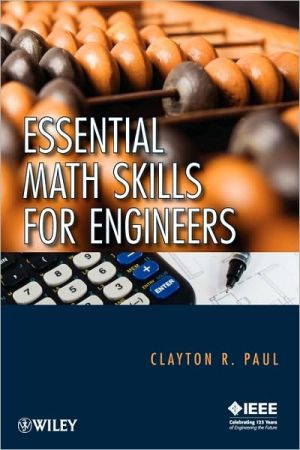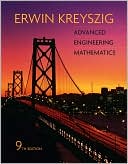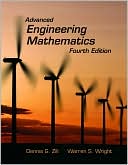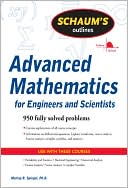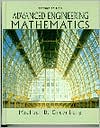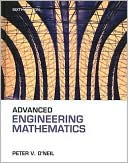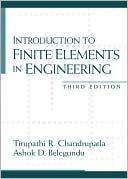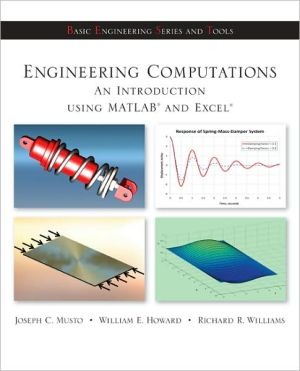Essential Math Skills for Engineers
Just the math skills you need to excel in the study or practice of engineering\ Good math skills are indispensable for all engineers regardless of their specialty, yet only a relatively small portion of the math that engineering students study in college mathematics courses is used on a frequent basis in the study or practice of engineering. That's why Essential Math Skills for Engineers focuses on only these few critically essential math skills that students need in order to advance in their...
Search in google:
Just the math skills you need to excel in the study or practice of engineering Good math skills are indispensable for all engineers regardless of their specialty, yet only a relatively small portion of the math that engineering students study in college mathematics courses is used on a frequent basis in the study or practice of engineering. That's why Essential Math Skills for Engineers focuses on only these few critically essential math skills that students need in order to advance in their engineering studies and excel in engineering practice. Essential Math Skills for Engineers features concise, easy-to-follow explanations that quickly bring readers up to speed on all the essential core math skills used in the daily study and practice of engineering. These fundamental and essential skills are logically grouped into categories that make them easy to learn while also promoting their long-term retention. Among the key areas covered are: Algebra, geometry, trigonometry, complex arithmetic, and differential and integral calculus Simultaneous, linear, algebraic equations Linear, constant-coefficient, ordinary differential equations Linear, constant-coefficient, difference equations Linear, constant-coefficient, partial differential equations Fourier series and Fourier transform Laplace transform Mathematics of vectors With the thorough understanding of essential math skills gained from this text, readers will have mastered a key component of the knowledge needed to become successful students of engineering. In addition, this text is highly recommended for practicing engineers who want to refresh their math skills in order to tackle problems in engineering with confidence.
Preface xi1 What Do Engineers Do? 12 Miscellaneous Math Skills 152.1 Equations of Lines, Planes, and Circles 152.2 Areas and Volumes of Common Shapes 212.3 Roots of a Quadratic Equation 222.4 Logarithms 232.5 Reduction of Fractions and Lowest Common Denominators 242.6 Long Division 262.7 Trigonometry 272.7.1 The Common Trigonometric Functions: Sine, Cosine, and Tangent 272.7.2 Areas of Triangles 342.7.3 The Hyperbolic Trigonometric Functions: Sinh, Cosh, and Tanh 362.8 Complex Numbers and Algebra, and Euler's Identity 392.8.1 Solution of Differential Equations Having Sinusoidal Forcing Functions 462.9 Common Derivatives and Their Interpretation 482.10 Common Integrals and Their Interpretation 512.11 Numerical Integration 563 Solution of Simultaneous, Linear, Algebraic Equations 593.1 How to Identify Simultaneous, Linear, Algebraic Equations 593.2 The Meaning of a Solution 603.3 Cramer's Rule and Symbolic Equations 613.4 Gauss Elimination 673.5 Matrix Algebra 684 Solution of Linear, Constant-Coefficient, Ordinary Differential Equations 834.1 How to Identify Linear, Constant-Coefficient, Ordinary Differential Equations 834.2 Where They Arise: The Meaning of a Solution 854.3 Solution of First-Order Equations 864.3.1 The Homogeneous Solution 874.3.2 The Forced Solution for "Nice" f(t) 884.3.3 The Total Solution 904.3.4 A Special Case 944.4 Solution of Second-Order Equations 964.4.1 The Homogeneous Solution 964.4.2 The Forced Solution for "Nice" f(t) 994.4.3 The Total Solution 994.4.4 A Special Case 1024.5 Stability of the Solution 1054.6 Solution of Simultaneous Setsof Ordinary Differential Equations with the Differential Operator 1054.6.1 Using the Differential Operator to Verify Solutions 1104.7 Numerical (Computer) Solutions 1135 Solution of Linear, Constant-Coefficient, Difference Equations 1195.1 Where Difference Equations Arise 1195.2 How to Identify Linear, Constant-Coefficient Difference Equations 1225.3 Solution of First-Order Equations 1245.3.1 The Homogeneous Solution 1255.3.2 The Forced Solution for "Nice" f(n) 1255.3.3 The Total Solution 1275.3.4 A Special Case 1305.4 Solution of Second-Order Equations 1315.4.1 The Homogeneous Solution 1315.4.2 The Forced Solution for "Nice" f(n) 1345.4.3 The Total Solution 1345.4.4 A Special Case 1385.5 Stability of the Solution 1405.6 Solution of Simultaneous Sets of Difference Equations with the Difference Operator 1415.6.1 Using the Difference Operator to Verify Solutions 1446 Solution of Linear, Constant-Coefficient, Partial Differential Equations 1496.1 Common Engineering Partial Differential Equations 1496.2 The Linear, Constant-Coefficient, Partial Differential Equation 1506.3 The Method of Separation of Variables 1516.4 Boundary Conditions and Initial Conditions 1536.5 Numerical (Computer) Solutions via Finite Differences: Conversion to Difference Equations 1617 The Fourier Series and Fourier Transform 1697.1 Periodic Functions 1717.2 The Fourier Series 1747.3 The Fourier Transform 1818 The Laplace Transform 1878.1 Transforms of Important Functions 1888.2 Useful Transform Properties 1918.3 Transforming Differential Equations 1948.4 Obtaining the Inverse Transform Using Partial Fraction Expansions 1969 Mathematics of Vectors 2079.1 Vectors and Coordinate Systems 2079.2 The Line Integral 2119.3 The Surface Integral 2149.4 Divergence 2169.4.1 The Divergence Theorem 2189.5 Curl 2209.5.1 Stokes' Theorem 2239.6 The Gradient of a Scalar Field 225Index 229
